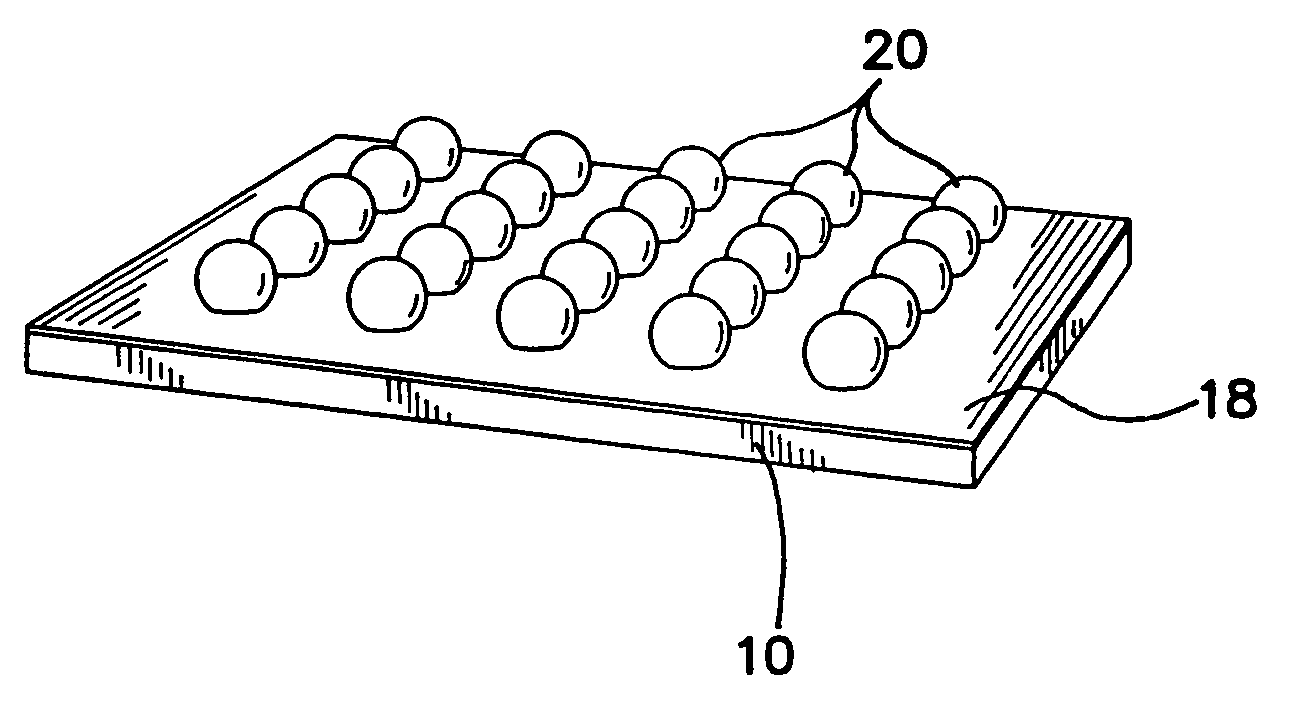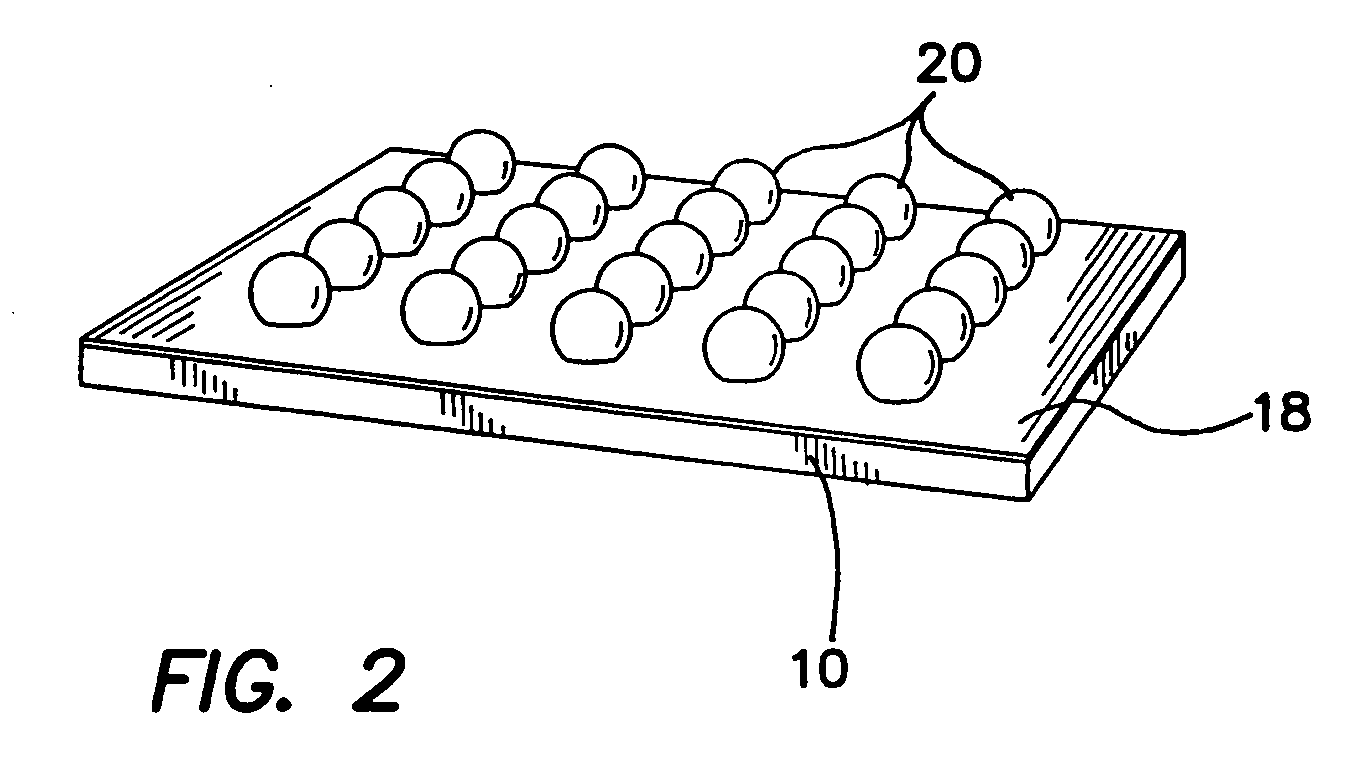Method and apparatus for wafer-level micro-glass-blowing
a micro-glass-blowing and wafer-level technology, applied in glass reforming apparatus, glass tempering apparatus, turn-sensitive devices, etc., can solve the problems of inability to achieve a spherical shape with traditional etching techniques, inability to use conventional glass-blowing to create large components,
- Summary
- Abstract
- Description
- Claims
- Application Information
AI Technical Summary
Benefits of technology
Problems solved by technology
Method used
Image
Examples
Embodiment Construction
[0039] The illustrated embodiments of the invention was developed as a microscopic gas confinement chamber, but many other applications are expressly considered as within the scope of the invention, e.g. vapor cells for nuclear magnetic resonance gyroscopes, micro-lamps, and hydrogen capsules for H-vehicles. Other applications include laser fusion targets, as well as lab-on-a-chip, medication capsules, and other biomedical devices. This listing by no means exhausts the list of potential uses and applications of the invention.
[0040]FIGS. 1a-1f depict the illustrated embodiment fabrication process. In FIG. 1a a photoresist layer 12 is disposed on a substrate 10 and patterned to define a plurality of openings 14 defined in photoresist layer 12. Cylindrical holes 16 are then etched in FIG. 1b all the way through a silicon substrate 10, preferably using deep-reactive ion etching (DRIE). The photoresist layer 12 is removed from the top of the perforated substrate 10 as shown in FIG. 1c. ...
PUM
| Property | Measurement | Unit |
|---|---|---|
| thick | aaaaa | aaaaa |
| thick | aaaaa | aaaaa |
| degree of plasticity | aaaaa | aaaaa |
Abstract
Description
Claims
Application Information
 Login to View More
Login to View More - R&D
- Intellectual Property
- Life Sciences
- Materials
- Tech Scout
- Unparalleled Data Quality
- Higher Quality Content
- 60% Fewer Hallucinations
Browse by: Latest US Patents, China's latest patents, Technical Efficacy Thesaurus, Application Domain, Technology Topic, Popular Technical Reports.
© 2025 PatSnap. All rights reserved.Legal|Privacy policy|Modern Slavery Act Transparency Statement|Sitemap|About US| Contact US: help@patsnap.com



